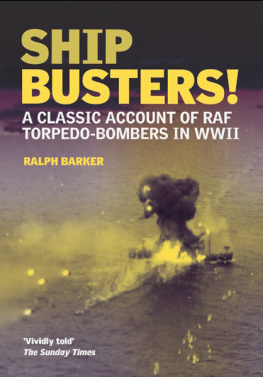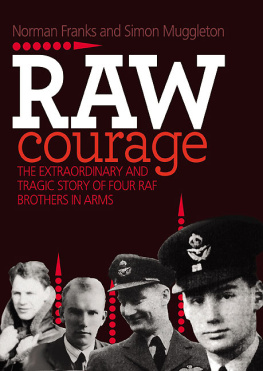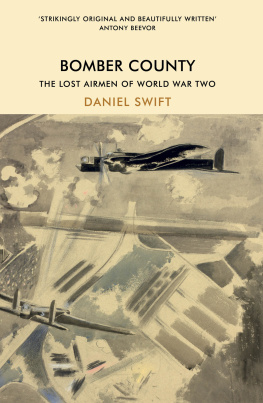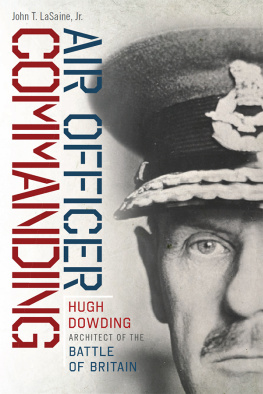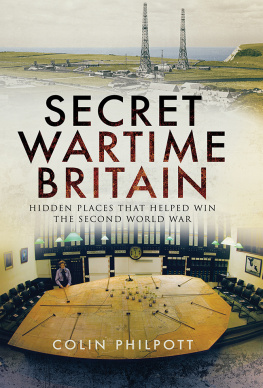DISASTERS
UNDERGROUND
By the same author
Secret Underground Cities
(Leo Cooper, 1998)
Cold War Secret Nuclear Bunkers
(Leo Cooper, 2002)
Saving Britains Art Treasures
(Leo Cooper, 2003)
DISASTERS
UNDERGROUND
N.J. McCamley
First published in Great Britain in 2004 by
Pen & Sword Military
an imprint of
Pen & Sword Books Ltd
47 Church Street
Barnsley
South Yorkshire
S70 2AS
Copyright N.J. McCamley, 2004
ISBN 1-84415-022-4
The right of N.J. McCamley to be identified as Author of this Work
has been asserted by him in accordance with the Copyright,
Designs and Patents Act 1988.
All rights reserved. No part of this book may be reproduced
or transmitted in any form or by any means, electronic or
mechanical including photocopying, recording or by any
information storage and retrieval system, without permission
from the Publisher in writing.
A CIP catalogue record for this book is
available from the British Library
Printed and bound in England by
CPI UK
For a complete list of Pen & Sword titles please contact
PEN & SWORD BOOKS LIMITED
47 Church Street, Barnsley, South Yorkshire, S70 2AS, England
E-mail: enquiries@pen-and-sword.co.uk
Website: www.pen-and-sword.co.uk
CONTENTS
This is the fourth volume in a loosely related quartet of books that between them, I hope, illuminate with some clarity the hitherto murky history of the British governments near-obsessive twentieth-century fascination with subterranean engineering on an epic scale.
Secret Underground Cities, the first volume, published in 1998, told the story of the huge, interconnected network of underground ammunition depots, factories and communication centres built 100 feet below the fields of north Wiltshire in disused stone quarries near the town of Corsham. Development at Corsham began in the early 1930s and was primarily a War Office concern. At that time those whose task it was to prepare covert plans for the next war envisaged the forthcoming conflict in terms with which they were familiar. Consequently, they planned for a prolonged land-based confrontation that would inevitably require the expenditure of many millions of rounds of artillery ammunition. Storage of this vast stockpile, estimated at half-a-million tons of shot and shell, during the lead-up to the Second World War and the maintenance of a similar reserve stock for the duration of the war, was the primary raison detre of the Corsham project.
It was not until 1936, when the RAF Expansion Plan was well under way, that two important facts became apparent; first, that perhaps air-power, rather than the sheer weight of heavy artillery pounding opposing lines from fixed battlefield positions, might be the decisive factor in any future war, and, second, that little or no provision had been made for the decisive factor in any future war, and second, that little or no provision had been made for the storage of the increasingly large and sophisticated range of weaponry that the expanding air force would inevitably require. As a result of this strategic reassessment, representations were made to the War Office that led to the RAF taking partial occupancy of Ridge and Eastlays Quarries, two of the War Office underground depots at Corsham that were nearing completion, but in the design and construction of which the Air Ministry had played no part. Readers of Secret Underground Cities will notice that much of the content of chapter two of this book is drawn directly from Secret Underground Cities, updated with new information released into the public domain since the first edition of that book was published. I make no excuses for its inclusion here because the Corsham story, as far as it relates to the tragic history of ammunition storage by the RAF in wartime, is too important a factor to dismiss and, furthermore, gives a prime illustration of the RAFs overall state of unpreparedness that was the principal cause of the disasters described in the pages that follow.
Although the central theme of this book revolves around the two major disasters at underground ammunition depots at Llanberis, in 1942, and Fauld, in 1944, it is necessary, in order to explain the causes of these twin catastrophes, to study the broader history of the RAF ammunition supply and storage organization. Thus, the earlier chapters comprise a concise history of the evolution. Thus, the earlier chapters comprise a concise history of the evolution of No. 42 Group, the organization within the RAF immediately responsible for maintenance of ammunition supplies (and oxygen, though that function is conveniently ignored throughout this narrative). The latter section of the book describes the RAFs woeful involvement in the British chemical weapons programme, primarily to illustrate how ill-learned were the lessons of 1942 and 1944.
Inevitably, for a work such as this, I owe a great debt of gratitude to the staff of the Public Record Office at Kew and to the archive staff at the RAF Museum at Hendon whose help in unearthing plans and engineering drawings of many of the locations described in this book has been invaluable. I am most deeply indebted, however, to Graham Crisp whose investigations into the broader aspect of this subject, and depth of understanding of it, far exceeds my own. Graham quite selflessly provided me with all his research notes, spanning a period of some three decades, into which I have dipped copiously. Without his help this book would probably never have been completed. Finally, I must thank Nick Catford whose battered Hasselblad has, once again, been the source of many of the excellent photographs included in this work.
| AID | Aeronautical Inspection Directorate
Ammunition Inspection Directorate |
| AMWD | Air Ministry Works Department |
| AOC | Air Officer Commanding |
| CAD | Central Ammunition Depot |
| CE | Composition Explosive (A sensitive form of high explosive used in fuses and detonators) |
| CEO | Chief Equipment Officer |
| COO | Commanding Ordnance Officer |
| CW | Chemical Weapon(s) |
| DC | Code-name for chemical constituent of mustard gas |
| DIP | Department of Industrial Planning |
| DSIR | Department of Scientific and Industrial Research |
| FAD | Forward Ammunition Depot |
| FFD | Forward Filling Depot |
| GP | General Purpose (bomb designation) |
| GS | General Service |
| GWR | Great Western Railway |
| HC | High Capacity (A pattern of high explosive bomb with a thin metal case and a high proportion by weight of HE content) |
| HE | High Explosive |
| ICI | Imperial Chemical Industries |
| KSK | Code-name for an early type of tear gas produced by Imperial Chemical Industries for the British government |
| LC | Low Capacity (A pattern of high explosive bomb with a heavy metal case and a low proportion by weight of HE content) |
| LCT | Landing Craft (Tank) |
| LMS | London Midland & Scottish Railway |
| MC | Medium Capacity (A pattern of high explosive bomb with an intermediate ratio of case-thickness to HE content) |
Next page

